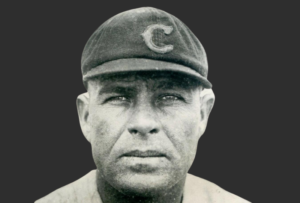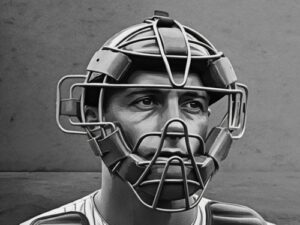Normally, trading a future Hall of Fame player is the death knell for a major league general manager. But when Pat Gillick did it he laid the groundwork for historic success. In 1999, Gillick, with impressive credentials on his resume, replaced Woody Woodward as General Manager of the Seattle Mariners. The team’s superstar center fielder Ken Griffey Jr. was grumbling about the lack of support on the roster and issued a trade demand. Woodward famously told reporters, “I don’t want to be the guy remembered for trading Ken Griffey Jr. away from the Mariners.” Gillick had no such fear.
Three months into the job, Gillick pulled the trigger on a deal that sent Junior packing. It wasn’t the first time the baseball lifer had dealt superstar players, and as it had before, Gillick’s vision proved to be excellent.
On Monday, Gillick was elected to the National Baseball Hall of Fame, receiving 13 votes from the 16-man Committee on Baseball Veterans. He will be inducted in ceremonies next July in Cooperstown, joined by any players elected by the baseball writers in January.
Gillick won three World Series titles as general manager, and in his 27 years in that role his teams reached the post-season 11 times. He enjoyed 20 winning seasons as a GM while making some of the shrewdest personnel decisions in the game during his tenure. Here’s a look at five that went a long way to landing Gillick in the Hall of Fame:
January 24, 1985: Snatching a closer for next-to-nothing
The Blue Jays were an excellent team in 1984, maybe the second best team in baseball behind the Detroit Tigers who ran away with the pennant. With a solid framework in place, Gillick needed one important position filled: closer. When Toronto lost designated hitter Cliff Johnson to free agency they were awarded a compensation pick from the team Johnson signed with: the Rangers. Gillick snapped up pitcher Tom Henke, a 6’5″ righty known for his blazing fastball and penchant for wildness. Toronto eased the bespectacled Henke into his role in 1985 and he responded with 13 saves and a 2.03 ERA. He finished seventh in Rookie of the Year voting, but more importantly, the Jays were set at the backend of their bullpen for years to come. Over the next seven seasons, Henke saved 204 games while striking out more than a batter per inning. He culminated his career as a Blue Jay with a World Series title in 1992, saving 32 games. Gillick had acquired a closer that gave him eight seasons of excellence, all in compensation for an aging DH that he didn’t want anymore.
December 5, 1990: Blockbuster deal includes four All-Stars
For all their success in the 1980s (two division titles and third-best winning percentage in the league), Gillick’s Jays had still not won a pennant. The team was coming off a second-place finish in 1990, but Gillick wasn’t satisfied. On December 5, 1990, he shook up the annual winter meetings for the first of many times when he sent two of his All-Stars, shortstop Tony Fernandez and first baseman Fred McGriff, to the San Diego Padres. In return, Gillick acquired right fielder Joe Carter and second baseman Roberto Alomar. Carter was coming off his first season with the Padres but hadn’t really taken to the team and struggled a bit, batting just .232 with a career-low .391 slugging percentage. Despite that, Carter was a clutch hitter, driving in 115 runs for San Diego. Alomar was the best young second baseman in the game, a player coveted by Gillick. “When we got him we changed the makeup of our lineup,” Gillick remembered years later. “He made our team go.” To get Carter and Alomar, Gillick had the guts to part with McGriff, one of the elite power hitters in the game. Fernandez was a personal favorite of the GM, a player he’d trade to re-acquire later in his career. The trade was the pivotal step that led to the Blue Jays winning back-to-back World Series titles in 1992 and 1993. Carter drove in 100 or more runs in six of his seven seasons in Canada, delivering the home run that won the 1993 Series. Alomar was an All-Star and Gold Glove winner in each of his five seasons playing for the Jays. He left Toronto in 1996, signing a free agent contract with the Orioles, a deal that reunited him with Gillick, who had moved on to Baltimore.
February 10, 2000: Junior sent packing to Cincinnati
By the time Gillick was hired to be the GM in Seattle a month after the end of the 1999 season, the Mariners clubhouse was filled with problems. Ken Griffey Jr. was coming off two of his best seasons, but he was unhappy. The starting rotation lacked an ace, and the bullpen was thin. Though he was just 23 years old, free agency was looming for shortstop Alex Rodriguez, who was sure to demand the biggest paycheck in the game. In ’99 the team had posted a mediocre 79-83 record, mostly because their pitching was lackluster. With Griffey, A-Rod, and Edgar Martinez, the club had one of the best lineups in the game, but they hadn’t been to the post-season in two years. Gillick wasted little time in overhauling the team. In the span of a week in December he signed free agents John Olerud, Kaz Sasaki, Mark McLemore, and Stan Javier. In January he inked free agent pitcher Aaron Sele. Then, on February 10 he granted Junior Griffey his wish, shipping the disgruntled center fielder to Cincinnati. In return, the M’s got four players, but the key man in the deal for Gillick was Mike Cameron, a journeyman outfielder known mostly for striking out a lot. Gillick inserted Cameron in center where he won two Gold Gloves in his four seasons as a Mariner. More importantly, the move cleared out the salary and the headache of Griffey and it came at the perfect time in the future Hall of Famer’s career. In Cincinnati, “The Kid” became “The Old Man”, suffering numerous injuries. He was hurt so much that Cameron hit more homers and drove in more runs in the four years after the deal than Griffey did. Gillick’s other free agent acquisitions (McLemore, Javier, Olerud, Sele, and Sasaki) proved critical to the immediate success of the Mariners. After trading away the greatest player in franchise history for seemingly very little, Gillick led Seattle to two consecutive American League Championship Series. In very short order, Seattle fans were asking “Griffey Who?”
November 30, 2000: Mariners lure Ichiro across the Pacific
Following the success of the 2000 season, his first as GM in Seattle, Gillick wasn’t afraid to reshape his roster. The opportunity came when Japanese star Ichiro Suzuki was made available to negotiate with major league clubs. Seattle bid $13 million to win the rights to deal with Ichiro. At the time the move was criticized by some in the U.S. who believed that position players like Ichiro couldn’t make the transition from Japan to Major League Baseball. Ichiro had won seven batting titles in Japan, and in an exhibition series against MLB stars in 1998 he had batted .380, impressing many who saw him. Gillick was confidant that Ichiro was especially suited to bring his talents to the majors. For a bargain price of $14.2 million, Gillick signed Ichiro for three years. In his rookie campaign, Ichiro dazzled fans with his speed, batting ability, throwing arm, and baseball instincts. His addition to the club sparked the Mariners to their best start in franchise history. The team just kept going, winning a major league-tying 116 games on their way to their second straight AL West title. They advanced to the ALCS before losing to the Yankees. Ichiro won the batting title, led the league in hits, won a Gold Glove for his play in right field, and earned both the Rookie of the Year Award and Most Valuable Player Award. In his ten seasons in Seattle, Ichiro has collected 200 hits every season, adding a second batting title. In 2004 he established a new MLB record with 262 hits, and he rates among the greatest Mariners of all-time.
November 7, 2007: Swiping Lidge from the Astros
Gillick didn’t draft very many of the key players who made up the core of the Phillies, but he did add a couple of important pieces. Brad Lidge was the most important. Heading into the off-season, Gillick knew his club needed an experienced closer in the bullpen. Former starting pitcher Brett Myers had won the closer spot by default in 2007 but Gillick knew that for the team to advance in the post-season, the Phillies would need a true stopper. Lidge had an unsettling year in 2007, having lost his closer role early in the year before regaining it. Then he suffered an injury to his oblique muscle on his left side in mid-season. With the injury hanging over his head, the Astros felt it was time to move the 30-year old closer.
Upon completing the deal, Gillick’s assistant, Ruban Amaro Jr. piped, “We’re getting one of the premier closers in the game.” Indeed they were, as Lidge made a complete recovery from the injury in 2008, saving 41 games and posting a stingy 1.92 ERA. The right-hander struck out an incredible 92 batters in less than 70 innings and saved some of his best work for the post-season. In 9 1/3 innings for Philadelphia that October, Lidge allowed just one run while saving seven games. he was perfect for the season – converting 48 saves in 48 opportunities. The final piece in the puzzle, Lidge was on the mound as the Phils won the World Series.






